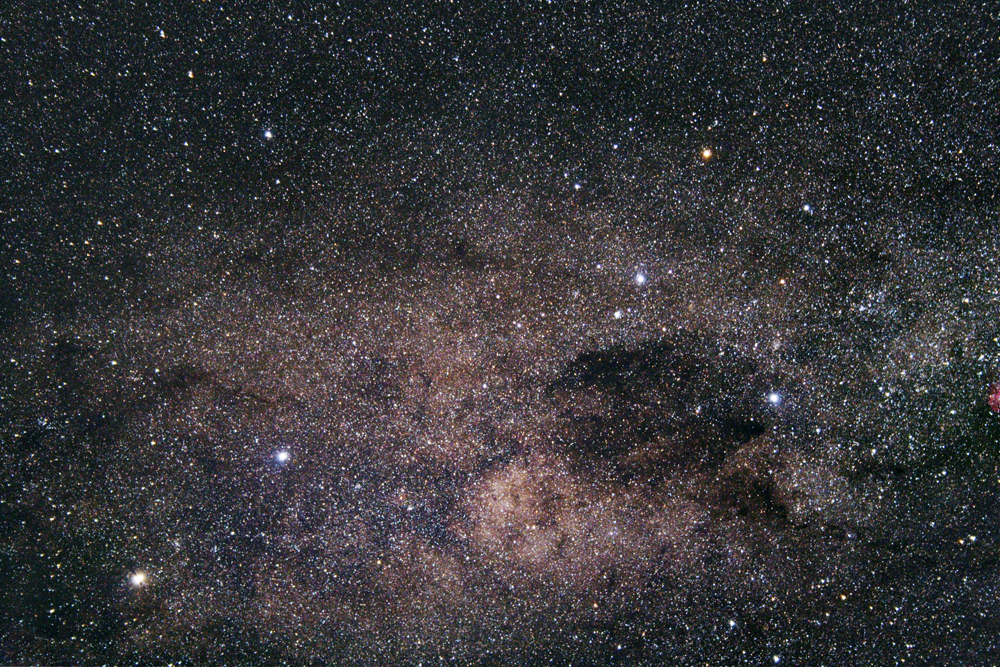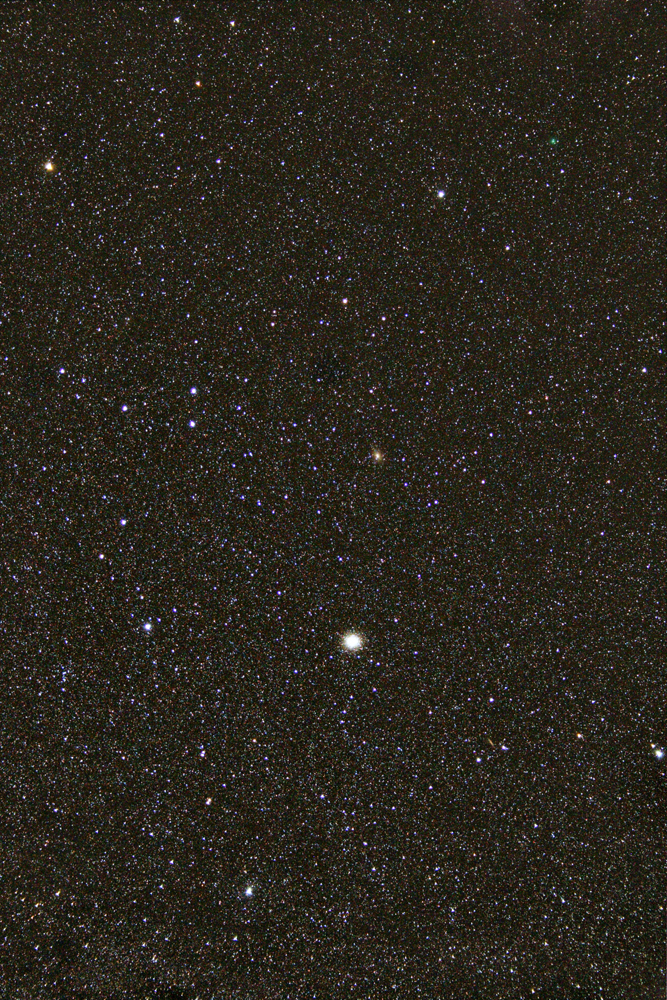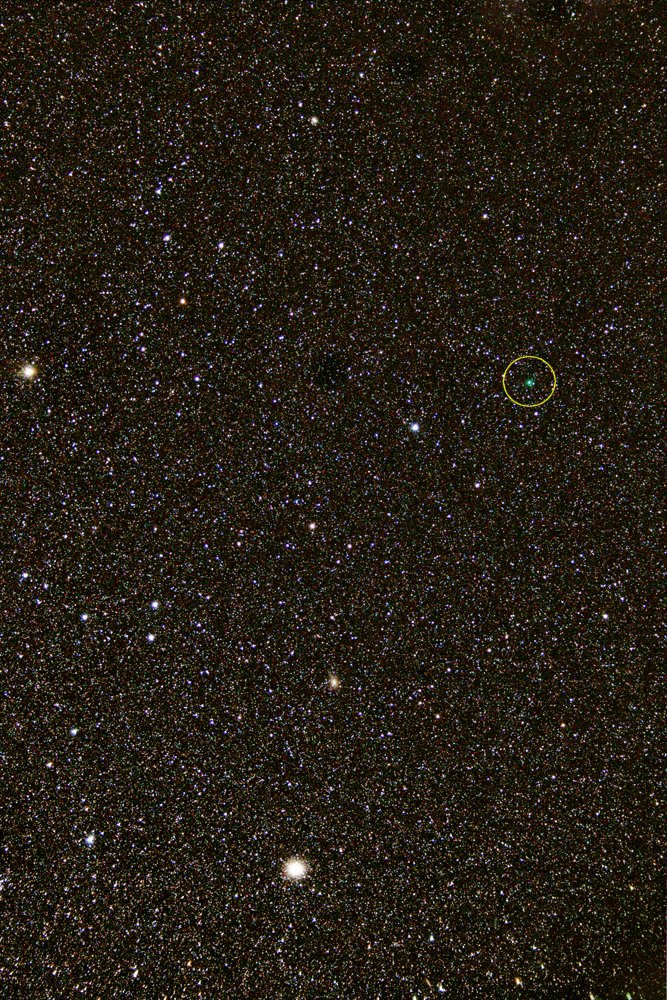
Combination of 10, 30 second exposures.
Modified Canon Digital Rebel DSLR camera. 55mm Canon lens at f/5.6.
Image taken in bright moonlight.
Surrounding the Southern Cross on three sides is the large constellation of Centaurus. For southern hemisphere observers, Centaurus is a favourite, probably the equivalent of Ursa Major for the northern hemisphere. It contains interesting deep sky objects of all kinds, including one of the most unforgettable sights, NGC 5139. It is also home to a spectacular galaxy NGC 5128, the Centaurus A radio galaxy, and the nearest star system to the solar system, the alpha centauri system, which is a spectacular double star for small telescopes. A single night does not do justice to this constellation!

This image shows the southern portion of Centaurus. Visible to the right of centre is the Southern Cross. Centaurus starts on the right of this constellation, loops above it and then to the left. The large dark region close to the centre is the famous dark nebula, the Coal Sack. This object lies partly in the Southern Cross and partly in Centaurus. The two bright stars to the right are aalpha and beta centauri, commonly known as "The Pointers" as they "point" towards the Southern Cross.

This image shows part of the more northerly regions of Centaurus. This area is just visible from some of the southern states of the USA. The large object in the centre is the magnificent globular cluster omega centauri, NGC 5139. To the north of thius object is the facinating galaxy NGC 5128. The bright orange star to the upper left is theta centauri. Also visible in the image is comet Gerradd, 2008 Q3. Although predicted to be only magnitude 12.3, this comet turned out to be easily visible in binoculars at magnitude 8.3. It is indicated in the image below by the circle.
